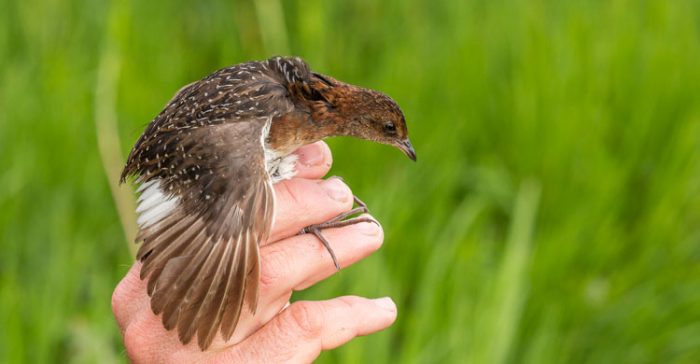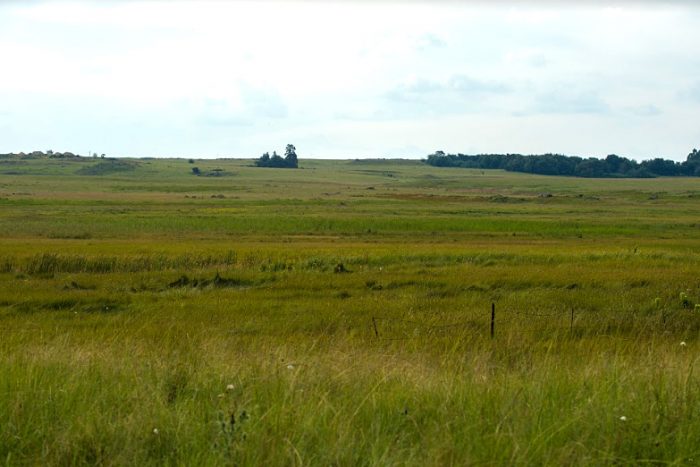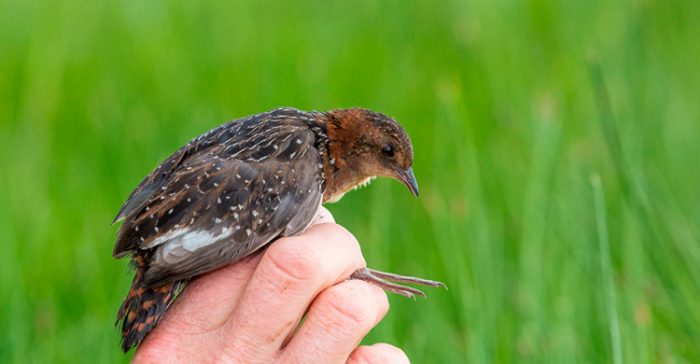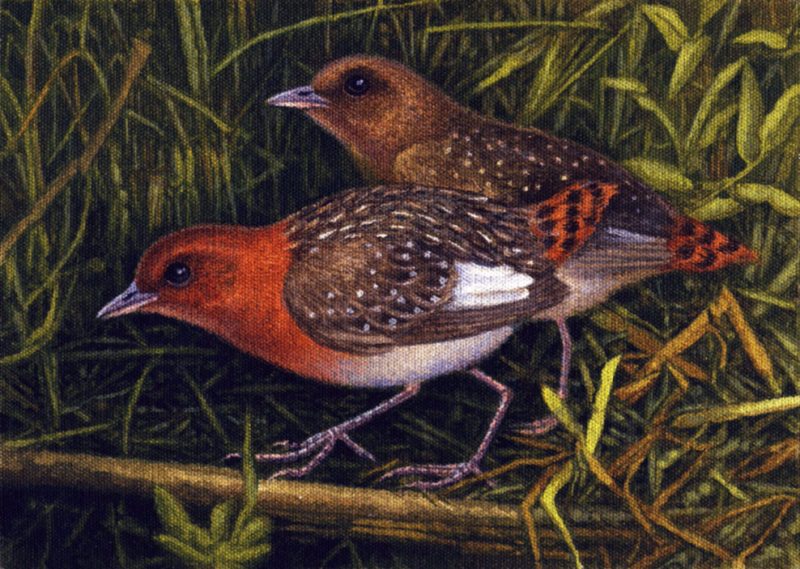What you see here is something very few people have ever seen in the wild. I haven’t seen any myself, yet. All I’ve seen is a sad little stuffed specimen in the Ditsong National Museum of Natural History. These are White-winged Flufftails Sarothrura ayresi. They are one of the rarest and most threatened birds in South Africa, and Africa. The species is only known to breed in Ethiopia and South Africa, and it was only confirmed as breeding in South Africa in the past year or so, using camera traps which recorded a female with three chicks! Everywhere that they occur, they face severe threats – the destruction, alteration and degradation of their wetland habitats. It is estimated that as few as 250 individuals of this species may exist in the entire world!
So what are flufftails, exactly? Their English common names refer to the rather fluffy feathers of their short tails. In Afrikaans they are known as ‘vleikuikens’ or ‘chicks of the marshes/wetlands’. The White-winged Flufftail is the smallest species, measuring up to 15 cm in total length, and weighing just about 30 g. Flufftails only occur in Africa and Madagascar. They are elusive birds, frequenting dense vegetation such as wetlands, rank grasses and forest edges. All the flufftails look quite similar, with dark feathers on their dumpy bodies, and often brighter reddish-brown feathers on their heads, breasts and/or tails. Most of them also have light spotting or streaking. Females are typically duller in colour than males. Their diet consists of leaves and seeds of marsh plants as well as small aquatic invertebrate critters, tiny fish and tadpoles. They were once considered members of the Rallidae Family (rails, crakes, coots, etc.), because of their similarity to crakes, but today they are grouped into their own genetically distinct family, the Sarothruridae. Flufftails are often only recorded and identified by their calls. Most species have far-carrying, hooting, almost ghost-like calls, that sound very “deep”, especially coming from such small birds. Only recently have the calls of White-winged Flufftails been recorded, including both clicking sounds as well as a low-frequency call.

The White-winged Flufftail has been observed only a handful of times. When approached, these birds will typically creep into dense vegetation and then sit tight. Flufftails in general can be recognized when flushed by their tiny size, dark colour and rather weak flight. That helps you say that what you flushed was a flufftail, but not which flufftail species it was, since they all look rather similar and a short glimpse of a bird flying away from you before diving into dense cover hardly allows you a detailed inspection. But in the case of the White-winged Flufftail, if you flush it, you know for sure what it is, because it is the only flufftail species that has the white secondary flight feathers, showing up as a clearly visible white panel in its wings as it flies.
Even so, White-winged Flufftails are very hard to ever see. The principal breeding site of White-winged Flufftails is Berga in Ethiopia, a patch of wetland that is flooded during the rainy season, making excellent living conditions for the flufftails: rather short but dense cover of grasses and sedges, and shallow waters. Unfortunately, this wetland region is only a few square km in extent and is still being encroached by ever-growing numbers of cattle and people. Public awareness campaigns are in effect. A few more wetlands in Ethiopia may sustain small breeding populations, but this hasn’t been confirmed. In South Africa, the main region where White-winged Flufftails occur, is one of high-altitude perennial marshes and seepages near the headwaters of rivers, near Dullstroom, Middelpunt, and Wakkerstroom. Even here there is only about 3.9 square km of suitable habitat in total. This means that globally, there is only 10 square km of suitable habitat where these flufftails live and breed!

The white wing patches of these flufftails seem to be an important visual feature, used in a flapping display between a breeding male and female. It’s strange that these flufftails have been found in South Africa and Ethiopia, but nowhere in between (apart from a tiny number of records for Zimbabwe, which is next door to South Africa). Still, the Ethiopian birds look just like the ones in South Africa. Are they the same species? Are they different subspecies forming isolated populations? Or are they in fact just one population – with the birds from Ethiopia migrating to South Africa and back? For a while it was thought that they were migrants, since the species was known to breed in Ethiopia but not in South Africa. But now that the birds are known to breed in South Africa, it may be that the two populations are indeed distinct and resident. But genetic analysis shows that the Ethiopian and South African birds are indeed very much alike, certainly the same species, and perhaps still connected by some kind of migration. It is likely that the species used to be much more abundant and widespread, but has dwindled to the point where all the linking populations between South Africa and Ethiopia have now disappeared, leaving those two widely separated populations. It would be interesting if migration can be proved, since flufftails hardly seem to be strong fliers, and the distance between their haunts in South Africa and Ethiopia is over 4000 km.
So where does that leave our little flufftails? At present, they are extremely endangered; even if their remaining habitat can be totally protected and safeguarded, it would be difficult to increase the flufftail population, since there are so few individuals left. A small population is always vulnerable. Not enough individuals means not much genetic variation, leaving them susceptible to diseases. One solution would be to reclaim certain regions, converting farmland, tree or sugarcane plantations back to their original marshland state. This would be a rather big project, but not impossible. A few additional few square kilometres might do wonders for White-winged Flufftails!
Another idea that is being considered, is captive breeding of White-winged Flufftails. The only problem is, we don’t know much about how flufftails breed at all! A solution to this conundrum might be to breed and raise the much more common Red-breasted Flufftails in captivity to study and document the specific needs of flufftails. This is a risky proposition but it might work. Whatever the case, White-winged Flufftails are charming and mysterious little birds that need our protection.


